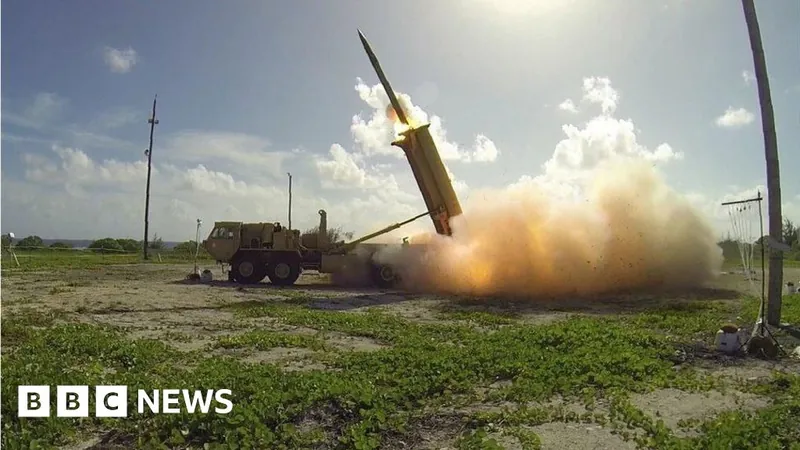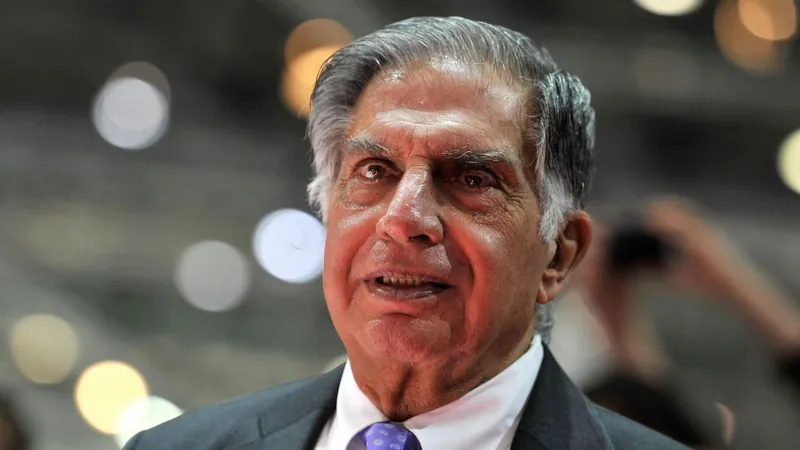
Unveiling THAAD: Why the US is Boosting Israel's Defense Amidst Rising Tensions
2024-10-15
Author: Noah
Introduction
In a bold military move, the Pentagon has confirmed the deployment of a high-altitude anti-missile system, known as the Terminal High-Altitude Area Defense (THAAD), to Israel. This decision follows a recent Iranian missile attack that targeted the nation, escalating an already fraught military landscape in the Middle East.
Purpose of Deployment
President Joe Biden emphasized that this deployment is intended to fortify Israel’s defenses as it prepares for a potential retaliation against Iran's assault, which unleashed over 180 ballistic missiles on October 1st. The situation has garnered significant attention, particularly because it involves an increase in US military presence in the region with approximately 100 American troops now stationed on the ground in Israel.
Concerns Over Missile Defense Effectiveness
As the war expands, the involvement of US forces raises questions about the effectiveness of Israel’s existing missile defense systems. THAAD's installation is viewed through the lens of this escalating crisis. Israel's Defense Minister, Yoav Gallant, has assured that their impending retaliation will be "lethal, precise, and above all, surprising". The Iranian missile strikes were reportedly provoked by Israel’s assassination of Hassan Nasrallah, the leader of Hezbollah, further complicating an already volatile situation.
US Strategy and Growing Military Aid
Despite the growing military aid, the decision to send THAAD might also hint at Washington’s concern regarding a more aggressive Israeli reaction to Iran. Biden has been vocal against strikes on Iranian nuclear facilities and energy infrastructure, fearing such actions could spiral into a broader conflict that disrupts the global economy.
About the THAAD System
The THAAD system, manufactured by Lockheed Martin and equipped with advanced radar by Raytheon, includes six truck-mounted launchers capable of intercepting ballistic missiles with high precision. Each launcher can hold eight interceptors, and the entire system requires a crew of approximately 100 personnel to operate. With a price tag of around $1 billion per battery, THAAD has become highly sought after by countries around the world, including Ukraine and Saudi Arabia, reflecting its significance in modern warfare.
Recent Iranian Missile Strike
This deployment comes on the heels of Iran’s missile strike which claimed one life in Jericho, West Bank. Initial reports indicated successful interceptions by Israel's sophisticated air defense systems, including Arrow 2 and Arrow 3 missiles, developed in collaboration with the US. Nonetheless, satellite imagery painted a grimmer picture, revealing significant damage at Israel’s Nevatim Air Force Base, particularly within F-35 hangar areas.
Ground Realities vs US Government Perspective
While the US government viewed the Iranian missile strike as ultimately ineffective, ground realities tell a different story, with craters found in densely populated regions, including areas near the Mossad headquarters in Tel Aviv. Analysts suggested that some Israeli F-35s were fortunate to avoid fires, though others report direct damage due to interception remnants.
Political Implications
Politically, President Biden's announcement of THAAD deployment reinforces the US's "ironclad" support for Israel amidst a complex web of military actions and diplomatic maneuvers. Over the past year, the US has supplied Israel with over 50,000 tons of military aid, but its dual strategy has drawn scrutiny, attempting to mediate and advocate for calm when tensions rise while simultaneously backing Israeli military endeavors.
Escalation and Broader Context
This recent escalation follows a series of tumultuous events, including Israel's targeted strikes against Hamas and Hezbollah, which Israeli officials argue are necessary to curb cross-border attacks. The Pentagon has characterized the THAAD deployment as part of ongoing adjustments to bolster Israel’s defense strategy and protect US forces from threats posed by Iran and its allied groups.
Social Media Response
Twitter and other social media platforms reacted sharply to the mounting tensions, with some experts warning that the current trajectory increases risks for US military personnel in the region as Iranian officials express concerns over American troop deployments.
Conclusion
In summary, the THAAD deployment is more than just military logistics; it symbolically underscores the tightening US-Israel alliance amidst a broader backdrop of Middle Eastern hostilities. As both nations navigate this precarious situation, the world watches closely to see how these developments will unfold, especially considering the implications for global security and diplomatic relations in the region.









 Brasil (PT)
Brasil (PT)
 Canada (EN)
Canada (EN)
 Chile (ES)
Chile (ES)
 España (ES)
España (ES)
 France (FR)
France (FR)
 Hong Kong (EN)
Hong Kong (EN)
 Italia (IT)
Italia (IT)
 日本 (JA)
日本 (JA)
 Magyarország (HU)
Magyarország (HU)
 Norge (NO)
Norge (NO)
 Polska (PL)
Polska (PL)
 Schweiz (DE)
Schweiz (DE)
 Singapore (EN)
Singapore (EN)
 Sverige (SV)
Sverige (SV)
 Suomi (FI)
Suomi (FI)
 Türkiye (TR)
Türkiye (TR)